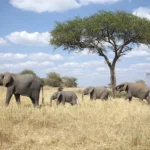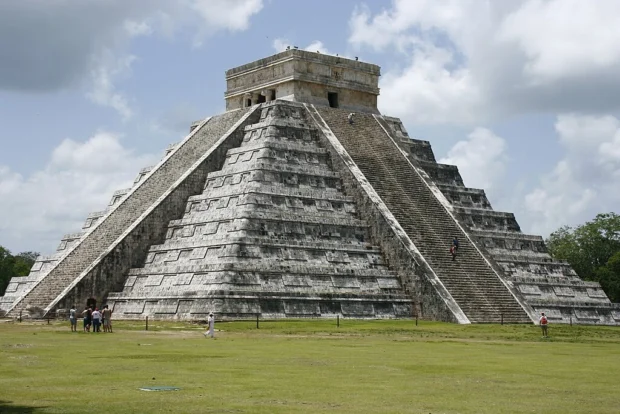Chichen Itza stands as a remarkable testament to ancient Maya civilization, located just a few hours from Cancun, Mexico. This iconic site invites travelers worldwide to witness its grand pyramids, intricate architecture, and deep-rooted cultural significance, making it a must-see attraction near Cancun. Whether you’re a culture enthusiast, a history lover, or someone curious about Mexico’s heritage, this travel guide helps you navigate your Chichen Itza visit with ease-including essential directions, visitor advice, and local insights.
Table of Contents
Setting Off From Cancun: Routes to Chichen Itza
Traveling from Cancun to Chichen Itza is straightforward and scenic, offering options fitted to your comfort and budget. The distance is approximately 200 kilometers (125 miles) west of Cancun’s city center, usually covered in about two and a half to three hours.
By Rental Car or Drive
Driving yourself is a popular choice, allowing flexibility for stops. From Cancun, take Highway 180D westward, a toll road offering smooth and quick passage. En route, the landscape shifts from bustling urban scenes to peaceful countryside dotted with small villages and farms.
Bus and Guided Tours
ADO buses depart regularly from Cancun’s central bus station to the town of Piste, adjacent to Chichen Itza. Bus rides last around three hours and are economical. Many visitors prefer guided tours departing from Cancun hotels, which include bus transport, entry tickets, and knowledgeable guides who illuminate the site’s history and mysteries.
Chichen Itza’s Cultural Pulse and Historical Depth
Chichen Itza was one of the largest Maya cities, flourishing between 600 and 1200 A.D. It served as a political, economic, and religious hub, symbolizing the peak of Mayan architectural mastery and astronomical knowledge.
The site’s centerpiece is the El Castillo pyramid, also called the Temple of Kukulcán. This structure aligns with the sun during equinoxes, creating a serpent-shaped shadow that “descends” the staircase-a remarkable example of Maya astronomy woven into architecture. Lesser-known is the Great Ball Court, the largest in Mesoamerica, where ritualistic games reflected celestial battles and social order.
After exploring Chichen Itza’s rich history, take time to visit Tulum’s ruins and beaches, where ancient sites blend with coastal calm.
For travelers intrigued by coastal ancient sites, the Tulum Ruins near Cancun reveal a unique Maya story perched above Caribbean waves.
Visitors often find themselves enchanted by the acoustic marvels, like the chirping echo near the pyramid steps, resembling the call of the quetzal bird, sacred to the Maya.
Best Times to Visit and What to Expect
Choosing when to visit Chichen Itza can impact your experience significantly. The site opens daily, with early mornings offering cooler temperatures and fewer crowds, especially weekdays outside holiday seasons. Arriving at opening time (around 8:00 AM) lets you enjoy a peaceful atmosphere and softer daylight for photography.
Seasonally, the dry months from November through April are favorable, avoiding the summer’s intense heat and heavy rains typical of the Yucatán Peninsula. Equinox days attract large crowds eager to witness the serpent shadow, so if you’re seeking a quieter visit, consider other dates.
Planning Ahead: Entrance and Tour Reservations
Chichen Itza requires an entrance fee paid at the gate, with additional charges for photography with tripods. Though tickets are often available on-site, during peak seasons and holidays, it is advisable to purchase tickets in advance through official platforms or authorized tour operators to guarantee entry.
Guided tours are highly recommended for their rich storytelling and historical context. Guides share insights into Maya rituals, symbolism, and the significance of each structure, transforming your visit into a vivid cultural encounter.
Nearby Stays and Flavors to Savor
Surrounding Chichen Itza, you’ll find charming inns and boutique lodgings ranging from rustic to comfortable, offering a tranquil retreat after a day of exploration. Staying overnight near the archaeological zone allows early visits and evening relaxation away from Cancun’s busy city life.
Local dining showcases Yucatecan cuisine, famed for its bold flavors and indigenous ingredients. Popular dishes include cochinita pibil (slow-roasted marinated pork), sopa de lima (lime soup), and panuchos (stuffed tortillas). Small eateries in Piste and nearby villages serve these authentic meals, often prepared using traditional methods handed down through generations.
Immersing in Local Heritage and Crafts
Beyond just the ruins, the region bursts with artisan workshops and cultural traditions that connect visitors to living Maya heritage. Nearby markets offer textiles woven by local hands, pottery, and jewelry, each piece echoing ancestral techniques and symbols.
On your way back to Cancun or while spending time in the area, take a moment to listen to folk music or observe regional dance performances. These customs provide a glimpse into community celebrations and the continuity of Maya identity in modern life.
Useful Resources for Your Visit
For official information, ticket reservations, and updates, travelers can find details on opening hours, guided tours, regulations, and cultural events ensuring a well-prepared visit.
Chichen Itza offers more than ruins; it breathes history, science, and artistry all in one majestic place. From Cancun, the journey is not just about reaching a destination but entering a space where time feels suspended in stone and shadow. Feel the pulse of ancient ceremonies, the whispers of Mayan gods, and the enduring human spirit that shaped this extraordinary world.

Anthropologist and traveler admiring local customs, festivals and traditional arts.
- 2007-06-22 Chichen Itza – 023 by markbyzewski on Wikimedia Commons – cc by 2.0
